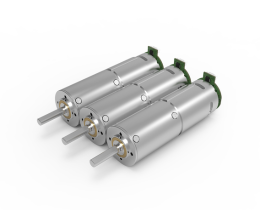What’s a Hobby Gear Motor? (And Why You’ll Want One)
Let’s start with a story. Imagine building a custom robot arm for your weekend project. You’ve got the design down, the code ready—but when it comes to smooth, precise movement, things get… clunky. Enter the hobby gear motor. It’s the quiet hero in small-scale mechanics, the part that turns “almost there” into “nailed it.” But what exactly makes these tiny powerhouses so special?
.webp)
A hobby gear motor is like a miniaturized workhorse. It combines a compact motor with a gear system to deliver controlled torque and speed—perfect for projects where space and precision matter. Think robotics, DIY gadgets, or even custom camera rigs. Unlike bulkier industrial motors, these are designed for tinkerers, makers, and anyone who likes to blend creativity with engineering.
So, Why Gear Reduction?
Let’s break it down without the jargon. Gears slow down the motor’s output speed but crank up its torque (that twisting force). Picture pedaling a bike uphill: lower gear = easier climb. Hobby gear motors do the same for your projects. Need a slow-moving conveyor belt for a model factory? Or a steady panning motion for a time-lapse camera? That’s where gear ratios shine.
Q: “But won’t more gears make it noisier?”
Surprisingly, no. Modern designs prioritize smooth operation. KPOWER’s motors, for instance, use precision-cut nylon or metal gears that hum rather than grind. Noise isn’t just annoying—it’s a sign of inefficiency. A well-built gear motor stays quiet because it’s not wasting energy on friction.
Durability Meets Playfulness
Hobby doesn’t mean “delicate.” These motors handle wear and tear better than you’d expect. One user ran a motor nonstop for 72 hours in a homemade animatronic prop. Result? No overheating, no performance drop. That’s the sweet spot: rugged enough for experimentation, refined enough for repeat tasks.
Q: “What if I need custom specs?”
KPOWER’s modular designs let you tweak voltage, gear ratios, and mounting options without needing a PhD in mechanical engineering. Swap parts like Lego blocks. It’s flexibility without the headache.
The Unseen Perks
Ever heard of backlash? It’s the slight play between gears—a nightmare for precision. High-quality hobby gear motors minimize this, ensuring your robot’s arm doesn’t wobble or your camera jerk mid-shot. It’s the difference between “good enough” and “why doesn’t mine do that?”
Then there’s efficiency. Cheap motors drain batteries; smart ones sip power. One maker swapped a generic motor for a KPOWER unit in their solar-tracking device and saw a 20% longer runtime. Small upgrade, big impact.
Wrapping It Up (Without Actually Wrapping It Up)
Hobby gear motors aren’t just components—they’re enablers. They bridge the gap between “idea” and “functional.” Whether you’re automating a dollhouse or prototyping a drone accessory, the right motor transforms friction into motion, complexity into simplicity. And when reliability matters? That’s where craftsmanship, like KPOWER’s obsessive attention to tolerances and materials, pays off.
Still curious? Experiment. Test. Break things. Because the best projects aren’t just built—they’re engineered with parts that keep up with your imagination.


































.webp)

